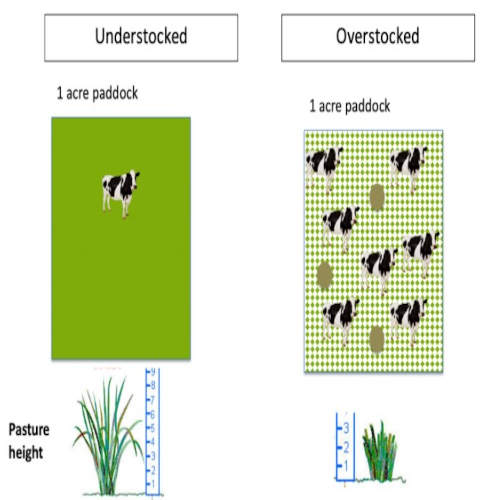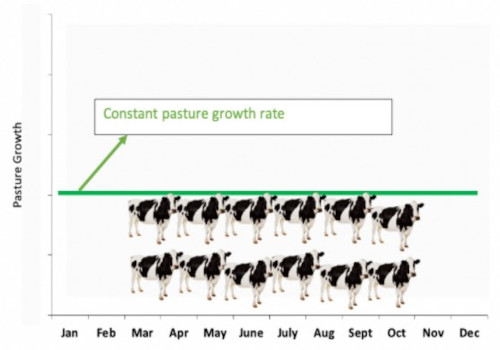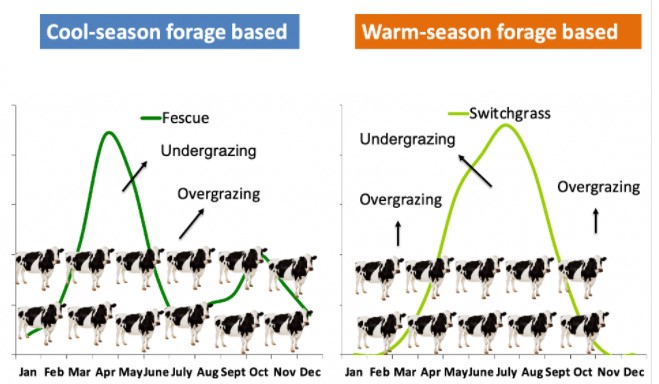By Miguel Castillo
Two critical elements of all grazing operations are: 1) the number of livestock and 2) the amount of pastureland. These two elements are often the most expensive assets of grazing systems. Defining an adequate balance between the number of animals and the amount of forage in the pasture is the most important grazing management decision a farmer can make. It is also one of the decisions for which the land-manager can have total control of. The animal-to-land relationship over time is known as THE STOCKING RATE. Stocking rate is often expressed as animal units per acre. The goal is to match the amount of forage produced with the amount of forage needed per animal without compromising either resource. Too many animals in a field result in overgrazing. Simply put, there is not enough forage to feed the livestock. Over time, the pasture may become patchy and infested with weeds, resulting in a need to buy costly supplemental feed. Too few animals result in underutilized forages and therefore, potentially lost income. Over time, you will observe mature forages and uneven grazing in some spots of the pasture (Figure 1).

Figure 1. Hypothetical examples of under- and over-stocked escenarios.
If forage productivity remained constant, then by knowing the pastureland productivity and the requirement of your livestock, you could estimate an appropriate stocking rate that would be constant year-round (Figure 2).

Figure 2. Constant (idealistic) pasture growth rate.
Forage productivity, however, is not constant, and it can be influenced by several factors, weather being one of the major ones. In North Carolina and the transition zone of the eastern USA, productivity and distribution of cool- and warm-season forages have a distinct pattern. For example, tall fescue is most productive in spring and fall, while switchgrass and bermudagrass are most productive during the summer. Thus, if the number of animals remains constant during the year (like it is usually the case for most farmers), then, there will be periods of under- and over-grazing if only one type of forage species is used (Figure 3).

Figure 3. Figures showing periods of under- and over-grazing for cool- and warm-season based grazing systems at the same stocking rate.
Year-round grazing management is possible, but only with a combination of forages (i.e., cool- and warm-season) and management practices (i.e., stockpiling). To define an adequate stocking rate that will work for your specific goals and environment, first, start looking for the types of forages and the average pastureland productivity in your specific area. No other grazing management practice, such as the use of electric fences, feeding minerals, soil sampling, fertilization, or weed management (although important) can overcome the failure of defining an adequate stocking rate.
Source : ncsu.edu